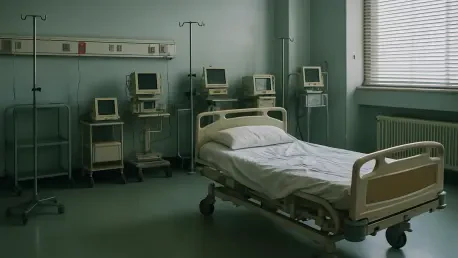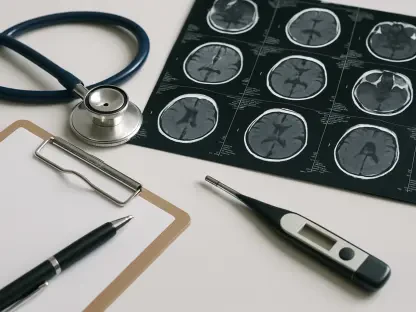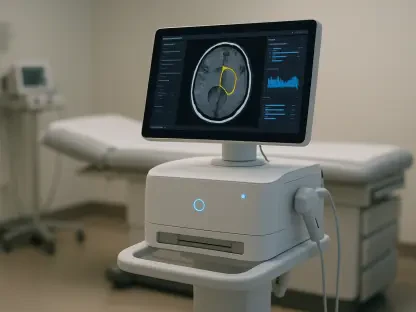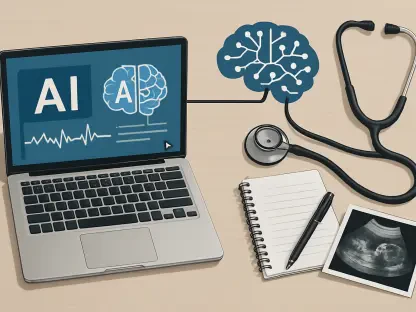In the intricate web of Kerala’s public healthcare system, a troubling issue has emerged that strikes at the heart of accessibility for the state’s most vulnerable populations: are patients in government hospitals, especially those enrolled in the Karunya Arogya Suraksha Padhathi (KASP) scheme, being forced to purchase essential medical equipment with their own money? This pressing concern, brought to light during a heated session in the Kerala Assembly, has ignited a fierce debate over the state of healthcare delivery. Opposition Congress MLAs, alongside Leader of the Opposition V.D. Satheesan, challenged Health Minister Veena George with firsthand accounts and complaints from medical professionals, revealing a stark contrast between the government’s promises of free treatment and the harsh financial burdens faced by the poor. As allegations of systemic failures mount, the minister’s responses have drawn scrutiny for their apparent evasiveness, setting the stage for a deeper examination of policy versus practice in Kerala’s hospitals.
Uncovering Patient Hardships in Government Hospitals
A glaring spotlight has been cast on the financial struggles of patients in Kerala’s government hospitals, where opposition MLAs have raised alarming claims of individuals being forced to buy critical medical supplies. Figures such as A.P. Anil Kumar and Saneeshkumar Joseph pointed to specific instances where patients had to procure surgical tools, X-ray films, and even basic items like cotton for surgeries. These reports are not isolated but reflect a broader pattern of distress among those who rely on public healthcare, particularly the underprivileged enrolled in schemes meant to guarantee free treatment. A notable grievance from Dr. Haris Chirakal, head of Urology at Thiruvananthapuram Medical College, highlighted how delays in equipment procurement have left patients with no choice but to pay out of pocket for essentials like flexiscopes used in kidney stone treatments. Such cases underscore a critical failure in ensuring that the most vulnerable are shielded from unexpected costs, raising questions about the effectiveness of existing healthcare policies.
Beyond individual stories, the cumulative impact of these shortages paints a dire picture of systemic neglect within Kerala’s public health framework. The opposition’s accounts suggest that the issue is not merely about isolated lapses but points to a recurring problem affecting multiple hospitals and departments. For instance, the inability to provide basic surgical supplies forces patients into a position of financial vulnerability, often at the most critical moments of their treatment. This situation is especially disheartening for beneficiaries of KASP, who enter government facilities with the expectation of comprehensive care without personal expense. The mounting evidence from medical professionals and patient experiences indicates that procurement delays are a significant barrier, undermining trust in the system’s ability to deliver on its promises. As these hardships come to light, the pressure intensifies on state authorities to address the gap between policy intent and the reality faced by those seeking care.
Analyzing the Minister’s Evasive Stance
When confronted with these serious allegations in the Kerala Assembly, Health Minister Veena George opted for a response that many have criticized as a masterclass in sidestepping accountability. Rather than directly addressing the claims of patients being forced to buy equipment, she leaned heavily on reiterating government guidelines that mandate free treatment and the provision of necessary supplies by hospital superintendents. By framing reported incidents as violations of established rules rather than acknowledging potential systemic issues, the minister avoided taking direct responsibility for the shortages. Her reference to an expert committee report, which noted instances of patients purchasing equipment, served as an indirect admission of the problem, yet it was presented without a concrete plan to rectify the underlying causes, leaving many questions unanswered about the state’s commitment to immediate action.
Further scrutiny of George’s approach reveals a deliberate pivot away from ground realities toward a defense of policy frameworks. While acknowledging that lapses occur, her emphasis remained on the existence of rules rather than their enforcement or the practical challenges in procurement that lead to such violations. This tactic has drawn sharp criticism for failing to engage with the lived experiences of patients who face financial burdens due to these gaps. The minister’s reluctance to confirm or deny specific allegations head-on has fueled perceptions of a disconnect between the government’s rhetoric and the actual state of healthcare delivery. As opposition voices grow louder in their demand for transparency, the minister’s responses appear more focused on maintaining a narrative of compliance than on addressing the urgent needs of those affected by equipment shortages in government hospitals.
Shifting Focus to Statistics and Political Narratives
Instead of offering tangible solutions to the equipment shortage crisis, Health Minister Veena George redirected the conversation to statistical achievements and political comparisons, a move that has drawn significant criticism. She highlighted a substantial increase in spending on medical equipment under the Left Democratic Front (LDF) government, citing figures like Rs. 80.66 crore invested in the last four years compared to just Rs. 15.65 crore during the United Democratic Front (UDF) tenure from 2011-2016. Additionally, she pointed to a 160% surge in patients seeking free treatment over recent years, presenting these numbers as evidence of progress. However, this focus on expenditure and volume fails to address the core issue of why patients still face out-of-pocket costs, leaving many to question whether increased funding has translated into meaningful improvements at the point of care.
This reliance on data over dialogue has been perceived as an attempt to shift blame and score political points rather than solve pressing problems. By contrasting current spending with that of the previous administration, George’s narrative suggests that the LDF has outperformed its predecessor, yet it sidesteps the immediate hardships faced by patients today. The emphasis on historical comparisons does little to alleviate the frustration of those who see no relief from procurement delays or supply shortages in hospitals. Opposition leaders have argued that such statistics are irrelevant when the poorest patients are still compelled to pay for basic surgical needs. This political spin, while showcasing fiscal efforts, underscores a broader trend of prioritizing image over actionable change, further deepening public skepticism about the government’s ability to bridge the gap between policy and practice.
Opposition’s Push for Accountability and Reality Check
The opposition, spearheaded by Leader of the Opposition V.D. Satheesan, has voiced profound dissatisfaction with the Health Minister’s approach, accusing her of evading the real issues with outdated and irrelevant data. Satheesan brought attention to poignant examples, such as a patient at Alappuzha Medical College being asked to purchase cotton for surgery, illustrating how even the most basic needs are unmet for the poorest citizens. His critique cut through the minister’s statistical defense, questioning the relevance of decade-old figures when current patients suffer. With a tone of exasperation, he sarcastically pondered if the discussion should revert to historical contexts entirely unrelated to today’s challenges, highlighting the urgent need for answers that address the present rather than deflect to the past. This push reflects a broader call for accountability that resonates with many who feel neglected by the system.
Adding to this narrative, the opposition’s persistence reveals a deep-seated frustration with the government’s apparent disconnect from ground realities. MLAs have consistently pressed for acknowledgment of specific complaints, emphasizing that the promise of free healthcare under schemes like KASP is hollow if patients must still bear costs due to systemic failures. Their arguments are bolstered by professional voices, such as those from medical staff who report procurement delays as a routine barrier to care. This collective outcry challenges the minister’s defensive stance, demanding not just explanations but actionable reforms to ensure that no patient is left to fend for themselves financially. The opposition’s focus remains squarely on the human cost of these shortages, urging a shift from political posturing to practical solutions that prioritize patient welfare over partisan rhetoric.
Exposing the Divide Between Policy and Implementation
At the core of this controversy lies a troubling divide between the intent of Kerala’s healthcare policies and their implementation in government hospitals, a gap that continues to affect the most vulnerable. While Health Minister Veena George champions increased investments and patient numbers as signs of advancement, credible evidence from opposition accounts and professional complaints paints a different picture. Reports of equipment shortages, such as the unavailability of critical tools in departments like urology and cardiology, reveal that many patients are still forced to incur personal costs, directly contradicting the ethos of free treatment schemes. This persistent issue suggests that despite fiscal commitments, the distribution and procurement systems are plagued by inefficiencies, failing to deliver resources where they are most needed and leaving patients stranded in moments of medical urgency.
Delving deeper into this systemic issue, it becomes evident that the disconnect is not merely about funding but about operational shortcomings that hinder timely access to supplies. The frustration voiced by opposition leaders and echoed by medical professionals points to a trust deficit in the government’s ability to translate policy into practice. Even as guidelines mandate that hospital superintendents provide necessary equipment, the reality of delays and shortages persists, undermining public confidence in the healthcare system. This gap highlights the need for a more robust mechanism to monitor and address procurement challenges, ensuring that increased budgets result in tangible benefits for patients rather than just statistical gains. Until these operational hurdles are tackled, the promise of accessible healthcare for Kerala’s underprivileged remains an unfulfilled aspiration, caught between bureaucratic inertia and political discourse.
Reflecting on Systemic Challenges and Future Steps
Looking back, the intense exchange in the Kerala Assembly shed light on a profound flaw within the state’s public healthcare system, where despite policies ensuring free treatment, patients endured financial burdens due to equipment shortages. Health Minister Veena George’s responses, marked by evasion and a reliance on statistics, fell short of addressing the immediate struggles highlighted by opposition leaders and medical professionals. The debate exposed a critical tension between policy promises and practical challenges, with increased government spending failing to fully close systemic gaps. Moving forward, actionable reforms in procurement processes and resource allocation stand as essential steps to prevent the poorest from bearing healthcare costs. Establishing stricter oversight and faster response mechanisms to address shortages could restore trust. Moreover, fostering transparent dialogue over political narratives would ensure that patient welfare takes precedence, paving the way for a more equitable healthcare framework in Kerala.









